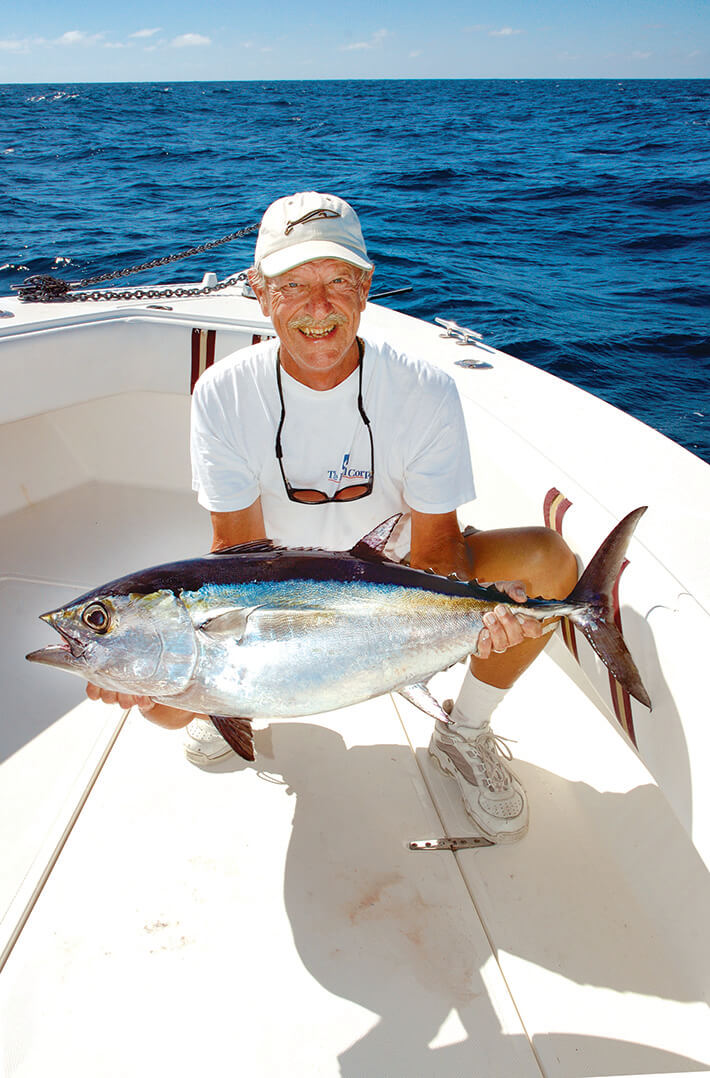After a two-hour run into the open Gulf of Mexico, there they were on the horizon. Two shrimp boats marking the spot like an X on a secret treasure map. As they sat culling their catch, the shrimpers created a feeding frenzy of silver and black missiles exploding on the surface like a Fourth of July fireworks finale. We could see the tuna bite was in full force from quite a distance, and with virtually no wind the fishing gods were giving us the perfect chance to trade our conventional tackle for fly rods.
As I began casting, fish after fish came racing up to my fly only to turn away at the last second. “I need to strip faster,” I thought. On my next cast, I put the butt of the rod under my arm and used both hands to work the fly as fast as humanly possible. From under the white-feathered fly came my quarry sky rocketing some 3 feet in the air before streaking 200 yards into the depths, taking my fly and plenty of backing with him. That’s when the real work began. For the fly fisherman, the lack of lifting power gives the fish a distinct advantage. It becomes a game of inches, and he already had the edge. But persistence paid off, and 20 minutes later the tuna came over the side of the boat.
If you’ve ever caught tuna, you know they are a blast with explosive strikes and blistering runs. On a fly rod, the thrill is ten-fold, and the process is not that difficult. Unlike sight casting to a skittish permit, these fish are not boat shy and when in a frenzy will hit anything that is seemingly trying to get away. Also, adding a little chum to the water to pull the fish closer will eliminate the need to make long, accurate casts. You will need to strip fast… really fast. Tuck the rod under your arm and use both hands. Sweeping the rod to the side at the end of a retrieve will also keep the fly moving and give you a more time with the fly in the water.
The gear: A 20-pound tuna needs a 12-weight rod to give the angler any chance of lifting the fish after a sounding run. I find a G Loomis GLX and NRX rod with a Galvan Torque Tournament reel works great. You have enough lifting power, backing and retrieve rate to get the job done. For flies, any good baitfish profile works well and even poppers elicit jaw-dropping strikes. I’m partial to all white, but white with a blue or green back works well too.
When it comes to fly fishing, don’t get caught just thinking about inshore species, there’s a lot of fun to be had offshore too.
Will Robinson is a seasoned tournament angler who has been writing about fishing for two decades. Check out Galvan reels at Galvanflyreels.com.
